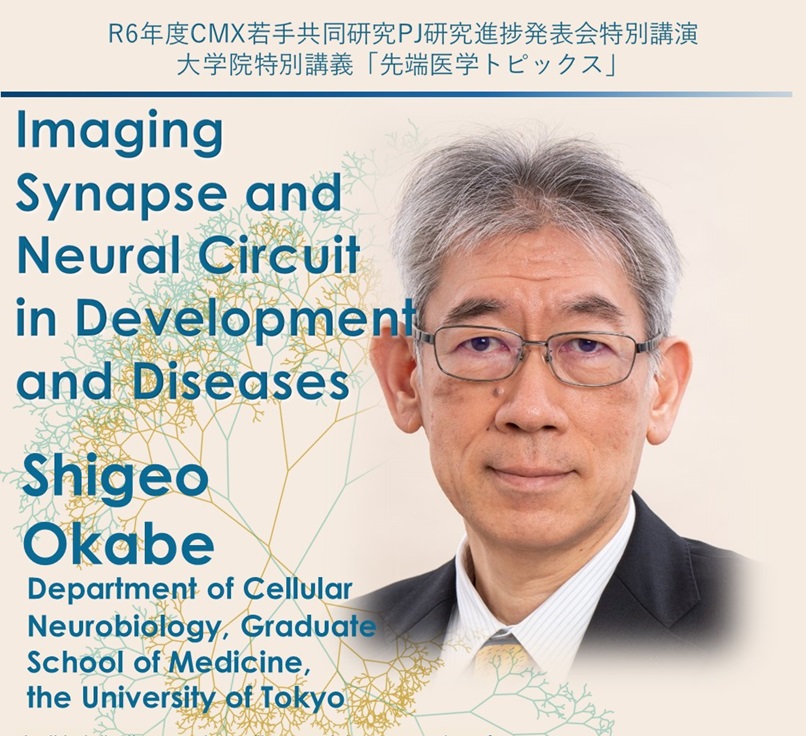CMX若手共同研究プロジェクトR5年度研究進捗発表会 特別講演
Imaging synapse and neural circuit in development and diseases
岡部 繁男 先生
東京大学大学院医学系研究科 神経細胞生物学分野 教授

| (日 時) 令和6年6月25日(火)16:40~18:10 |
| (場 所) ・対面…神戸大学神緑会館記念ホール ・Web…お申し込みの方へ別途参加URL等ご連絡差し上げます。 |
| (お申込み方法) 各分野等への通知をご確認ください。 |
| (講演概要) The development of neuronal circuits in vivo depends on the precise regulation of synapse formation, elimination, and remodeling. In vivo two-photon excitation microscopy is a valuable technique for quantitative analyses of synapse dynamics and circuit activities in the mouse neocortex. Our imaging analyses confirmed the presence of two phases of synapse dynamics in the mouse neocortex during postnatal development. In the first phase (until postnatal 20 days), the dynamics of synapses are high, and more than 10% of spine synapses are replaced within a day. In the second phase (after three weeks postnatal), synapse dynamics is highly suppressed, and the rate of spine elimination is slightly higher than that of spine formation. It is likely that the synapse remodeling is precisely regulated to achieve the proper neural circuit function in adulthood, and altered synapse remodeling may cause neural circuit dysfunction, which is seen in psychiatric disorders. In this talk, I will show examples of analyzing mouse models of psychiatric disorders using super-resolution imaging and in vivo two-photon imaging. In the first example, unbiased categorization of synapse nanostructure in mouse models of psychiatric disorders was performed, and the structural features of schizophrenia mouse models could be successfully isolated. In the second example, impaired population activity of pyramidal neurons in the auditory cortex of a schizophrenia mouse model in response to oddball sound stimuli was identified. This impairment can be taken as a translational biomarker candidate with properties similar to mismatch negativity, a reliable auditory phenotype in schizophrenia patients. Further characterization of impairments in the local neural circuits of the auditory cortex may provide details linking synapse dysfunction and altered auditory information processing in patients with psychiatric disorders. |